
- Leung Chik
- Fu Kan Nam, Fu Kwai Chung
- Maryann Pun
- Iris Lam
- Maria Lung
- Winnie Wong
- Wong Hip Chong
- Fung Fuk Wah
- Lau Fuk Kiu
Leung Chik

Leung Chik(left)helped Sir Horace(middle)in the establishing of Kadoorie Farm
Leung Chik, or Uncle Chik as he’s known, is now in his nineties but still cherishes fond memories of Sir Horace Kadoorie. He called Sir Horace “Boss” but their relationship was more like friendship. Back in the early 1950s, when Uncle Chik first met Horace at the Kadoorie mansion, he was busy weeding the garden. Sir Horace said Uncle Chik’s farming skills were excellent and he liked his humble demeanour. He knew Uncle Chik was an immigrant from the mainland and needed resources and capital to earn a living. So, Horace supported his idea to start a pig farm, and offered him 6 pigs and an interest-free loan to buy land and build a home and pigsties in Lam Tei, Tuen Mun, in 1952. Uncle Chik said his project was called “KAAA Unit No.7”, but it was actually KAAA’s first project; “7” was Sir Horace’s lucky number and he chose it to mark the beginning of KAAA’s charity projects.
Uncle Chik helped Horace to develop the Kadoorie Experimental Farm at Pak Ngau Shek and supported KAAA projects all over Hong Kong. He reviewed farmers’ applications and monitored the progress of village infrastructure projects.

A news reporting of US Vice-President Richard Nixon, who would later become US President, also met with Uncle Chik when he visited Hong Kong in 1953.
Uncle Chik’s hard work brought him great success in pig farming -- he was known as the “King of Pig Farming”. His farm was a model for many farmers in the region. The US Vice-President Richard Nixon, who would later become US President, also met with Uncle Chik on his visit to Hong Kong in 1953. In 1970s, he had more than 10,000 pigs and became the Chairman of the Federation of Pig Raising Co-Operative Societies Hong Kong, Kowloon, NT.
In the 1980s, Hong Kong’s agricultural sector was shrinking and so Uncle Chik turned his “KAAA Unit No.7” pigsties into a Chinese restaurant which he called “Kasir” in memory of the support and assistance given to him by Sir Horace. Kasir comes from “Ka Sir” or Sir Kadoorie.
Although he no longer farms pigs, Uncle Chik still feels very grateful to Sir Horace for everything he did for him. “Sir Horace Kadoorie changed my life,” he said. Sir Horace not only gave monetary assistance but also his heartfelt care to those in need.

7 KAAA, Lam Tei is now a Chinese restaurant called "Kasir Restaurant". The old pigsties facilities can no longer be found.
Fu Kan Nam, Fu Kwai Chung

Fu Kan Nam (Left) thanked the Kadoorie brothers for their help by sending flowers to the Kadoorie Mansion every Christmas.
In the 1960s, when the home of the Fu Kan Nam family in Yuen Long caught fire on Christmas Eve, Sir Horace Kadoorie spotted the blaze as he drove past. He rushed over to find out how he could help. Horace provided Farmer Fu an interest-free loan to build a new house. He was also given pigs, chickens and pigsties. Horace even comissioned a path construction for them to the village in order to enhance its infrastructure and transport access. Horace became a close family friend and visited often. Fu’s son, Kwai Chung, was always happy to see Sir Horace because he gave him raisins. From 1970s until 2000, Fu paid just HK$3 to KAAA as a nominal monthly rent. Fu’s family farm became a model for local farmers and was often visited by overseas organisations including United Nations officials.

Sir Horace and Fu Kan Nam taking a photo at the T.S. Woo Memorial Pavilion
Once they could stand on their own feet, Fu’s family stopped receiving donations from KAAA. They felt contented and grateful for Horace’s help.


The KAAA sign is still found at the Ka Kin Farm located at Yuen Long. Tourists often visit the old pigsties inside the farm.
Today, Fu’s pigsties have been rebuilt into an organic farm providing fresh vegetables to local restaurants and organisations. The name of the farm, “Ka Kin”, commemorates the kindness of the Kadoorie Brothers.
Maryann Pun
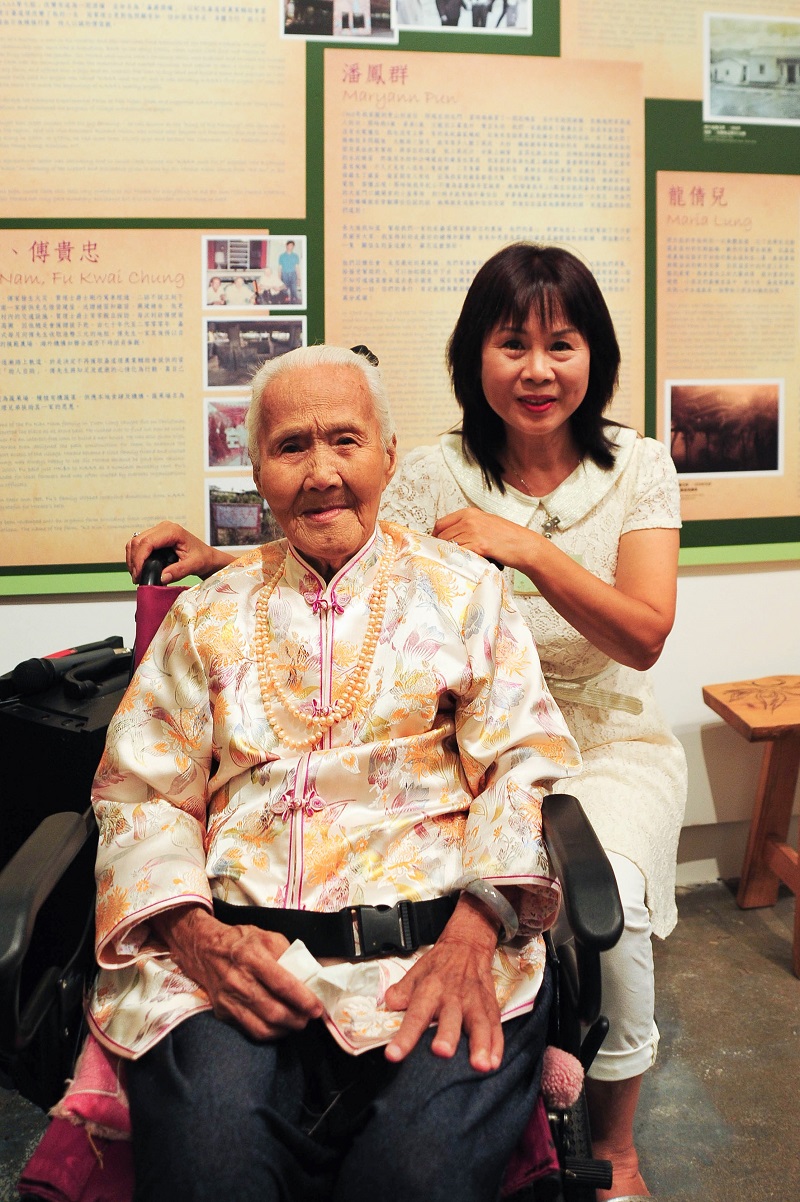
Maryann (Right) and her mother Chow Yun Kuk (Left)
In 1968 my family moved to Tsing Shan Tsuen, in what is called Tuen Mun today. Back then, my mother bought a mud-brick house, and two pigsties, and there were several fields with grass taller than a person. At that time I was 9 years old and my younger brother was 5. My father was blinded in an industrial accident, so my family started farming. Within our four walls, we didn’t have any water, electricity or a stove. I didn’t go to school and there were many mosquitoes, bugs, snakes and rats. Later on an uncle wearing shorts and long white socks came into our lives. He came several times, asking my mother lots of questions.
After about two or three months, lots of people arrived with all these building materials such as cement, planks, and wire. My mother went to find my father’s friends to come help the uncle turn our mud-brick hut into a cement house, install steel window frames, and replace the roof with a wooden one. The mud-brick pigsty was also converted into a solid cement pigsty, and then they made a wooden and brick chicken house. A wire fence now surrounded our home, we had such a neat farm; it now looked very large-scale. Shortly afterwards someone came to give us two sows, 300 chickens, and feed for them all, and that’s when our farming life really began. The sows gave birth to so many piglets and the hens gave us eggs. Every week someone came to collect them. Because our family’s eggs were huge, they could be used to hatch new chicks, so we could sell them for a high price. Gradually a TV and then a fridge appeared in my home! Back then I was young and I didn’t understand why every year during Christmas holiday at about 5am, my mother would take me next to the main gate of the Kadoorie house to wait in a small hut. Just after 7am, the foreign uncle would arrive wearing a dressing gown, and accept the big bunch of flowers my mother would be carrying. An auntie near the gates would translate what the uncle was saying. This was how my mother and the uncle talked to each other. Then the uncle would gently stroke my head, and beaming, would say goodbye to us!
When I grew up I understood that it was the Kadoorie Farm set up by the Kadoorie family that had helped my family. Through their kindness they quietly helped so many impoverished people in the New Territories in the last century. My family was given the best breeds of pigs and chickens. Later, we learned that those chickens had been specially bred in the US, each one was worth thousands of dollars; no wonder our eggs were so huge and the chicks were so strong.
They gave so much to society with love and care. Their family helped so many people. As well as helping them make a living, the Kadoorie brothers also gave them courage, and gave those who accepted their help the ability to hold up their heads and carry on. This family truly deserves our admiration! These past years, I have always wanted to thank the Kadoorie family, but I didn’t know how I could go about expressing my gratitude, but now I have this chance to speak on this platform; I am really thankful! Thank you for everything you did for my family and for all those poor families. Your benevolence certainly rescued so many people in trouble. I believe that today so many people have very good lives just because of your help. Many, many thanks!
Remarks: Chow Yun Kuk passes on the benevolence to people in need after she retired. In recent years, she has been helping to distribute over 2,000kg of rice to the elderly people in Hong Kong.
Iris Lam
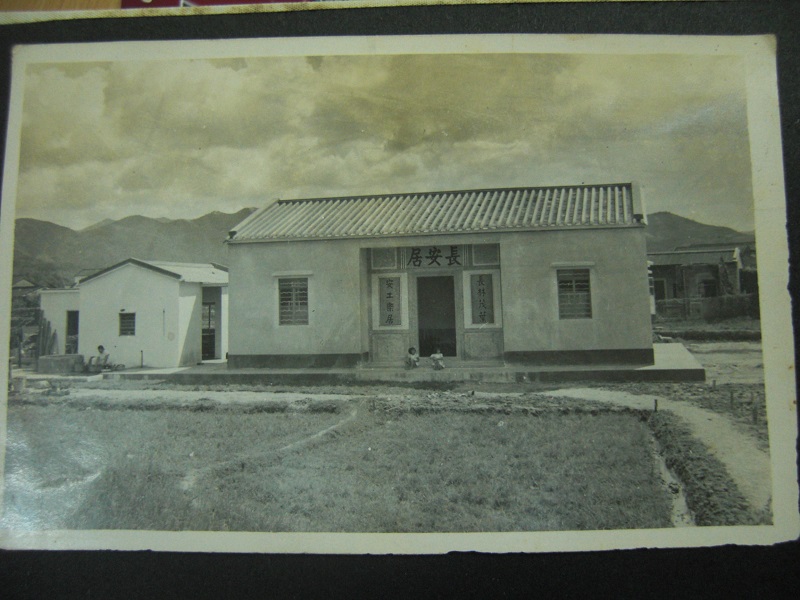
Photo credit: Iris Lam. Date of photo taken: 1956. Location: 155 Sung Ching San Tsuen, Yuen Long
Hong Kongers who grew up in the New Territories all know about the Kadoorie Farm and Botanic Garden. When the immigrants first arrived in Hong Kong from the mainland in 1949, they had few resources and no special skills. It was hard for them to make a living. By helping them learn how to plant crops and raise pigs and poultry, Kadoorie Farm made a huge contribution to the future of farming in the New Territories and supported a large number of refugee families. The elders will say that Kadoorie Farm was a mentor for the people of the New Territories. There’s a well in my hometown that was dug for the villagers by Kadoorie Farm. It provided potable water for the villagers until the Hong Kong government gave them running water.
After the land was contaminated, the villagers couldn’t use the well anymore. But the letters, KAAA, engraved in the well showed that it had given clean water to the villagers in the old days. Those letters have become faint over the years, but they will always remind those people that work in the cities today not to forget their roots. These days there are environmental problems, Hong Kong is polluted, and long-term city dwellers already feel alienated from nature and without realizing it they are contributing to environmental destruction.
Maria Lung
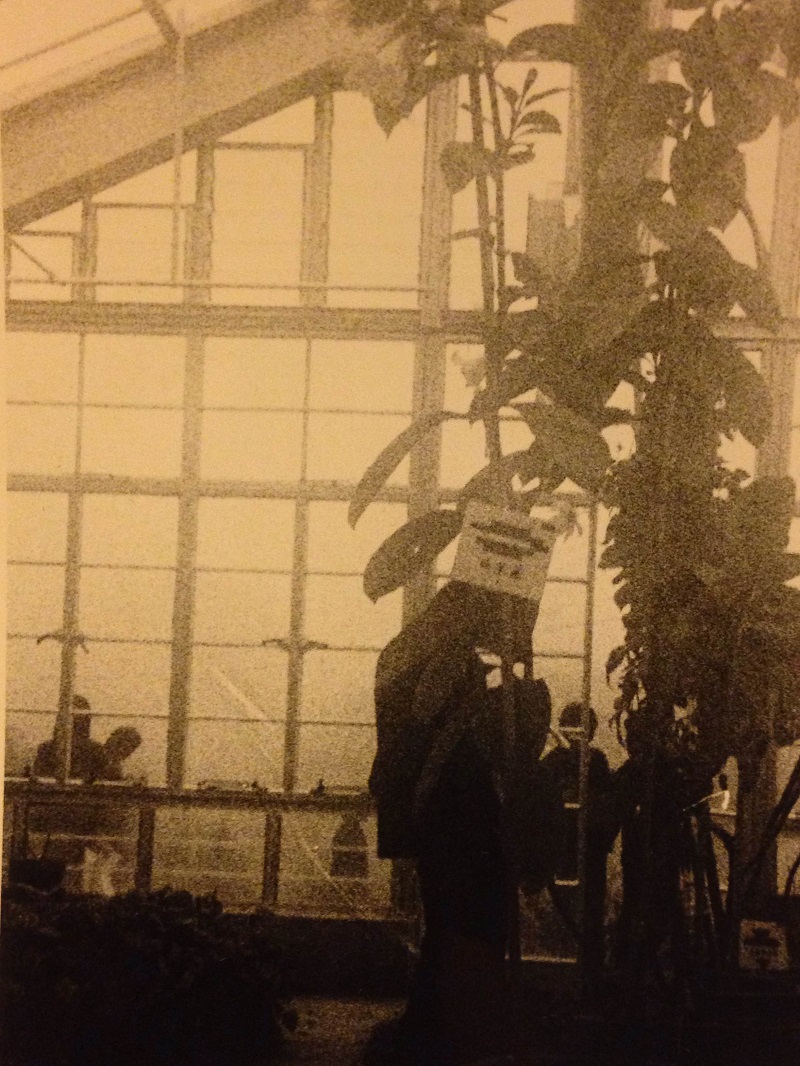
This photo was taken when I went on a group trip in my youth; I forget whether my school or the housing community organized it. Even though my memory is hazy, the name Kadoorie Farm is forever engraved in my heart. The entire farm was surrounded by lush green trees; but looking out from inside the greenhouse, there was also another kind of feeling. That day it was extremely foggy; it was just like being in a wonderland. Us kids were having a great time. Until today, in my heart, Kadoorie Farm has always been a wonderland that gives children knowledge.
Date of photo taken: Early 1970’s
Location: Greenhouse of Kadoorie Farm
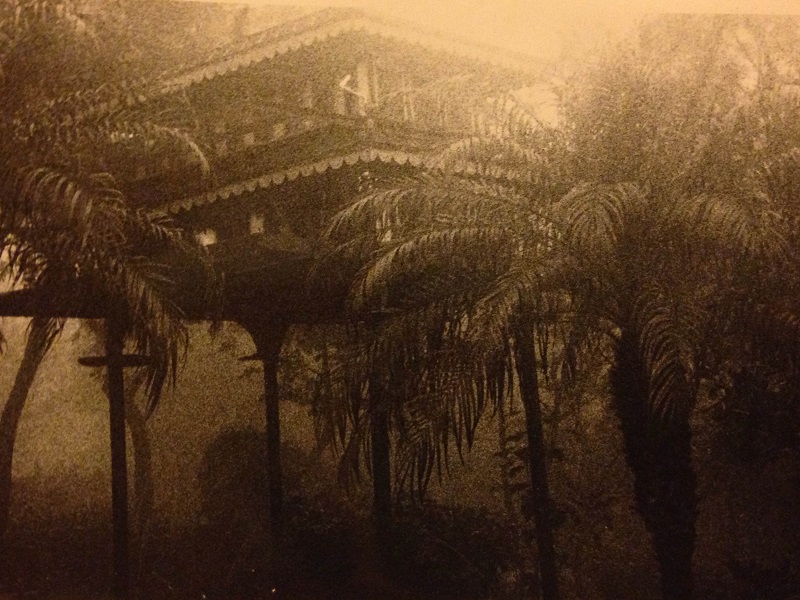
When I learned what what a greenhouse was, what a farm was like, and that there are thousands of different kinds of flowers and trees, my eyes were really opened as a primary school student. I remember that day was a trip organised by a factory that my mother was working at. In my memory it was raining and Kadoorie Farm was like it was in a misty paradise. The whole farm was cloaked in mist, just like in this photograph. The children were having a lot of fun.
Date of photo taken: Early 1970’s
Location: Kadoorie Farm
Winnie Wong
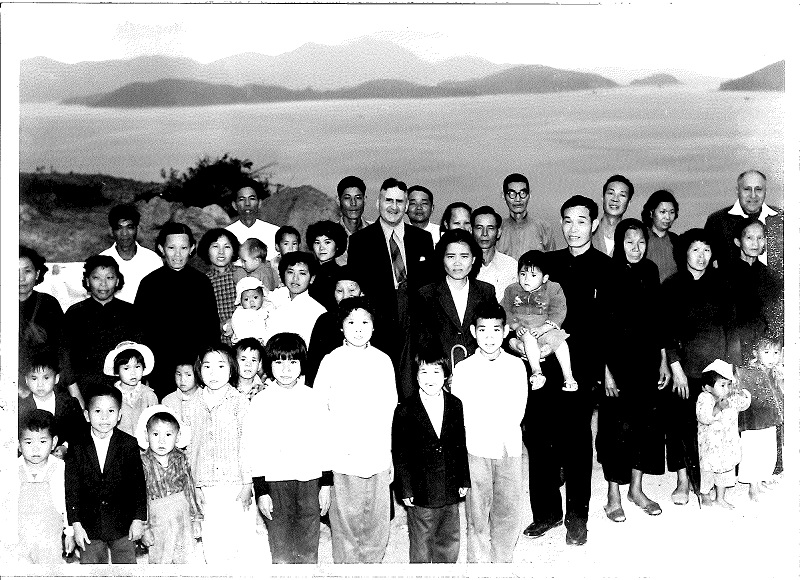
Winnie’s parents are in the picture next to Sir Kadoorie in the middle on his right.
My father walked from Wuhua County mainland China, arriving in Hong Kong in the fifties with just the clothes on his back. Sir Kadoorie gave him a job at the farm where he met my mother who lived in a village near the farm. When they got married, they moved into Ka Loon Tsuen which was built by the KAAA. This was where myself and my five siblings were born. My mother and father are in the picture next to Sir Kadoorie in the middle on his right. We were not wealthy but our lives were enriched because of the KAAA. As I remember we had fruit trees, pigs, chickens and fish as livestock with my mother growing vegetables as well, I think we kept bees for a little while too.
There are memories distant as we moved away to live with our grandmother when I was at the tender age of 6; when both parents were uprooted to UK. However embedded deep in my memories are the kindness of Sir Horace, especially with the raisins and candies given to us every morning when schoolchildren are waiting for the school bus, and if a vehicle with the number plate 777 turns up, we would all jump out of the bus for the treats. I remember one morning, it was wet and windy, not sure how, but all of us ‘missed‘ the school bus. When Sir Kadoorie saw this as he made his way around distributing candies, he bundled us all into his vehicle and took us to school, to this day, I feel that Sir Kadoorie did not only showered people with his kindness, but taught us through examples of how to treat others. My family owe everything to Sir Kadoorie, without his kindness, we would not be here today.
Wong Hip Chong
In 1960, I remember I was 14 that year. I was with my mother and father and three younger brothers, in Shek Wu San village in Fanling, ploughing the fields. That summer my father got sick and died. Less than two months later, early one morning, I took two of my younger brothers with me to take the vegetables we had picked that morning to Tin Kwong Hui in Fanling to sell. My mother and youngest brother stayed at home to do some farm work. As we were on our way to the market, some passers-by yelled out to us that a huge fire had broken out. I didn’t know where they meant and because I was in a hurry to get to market I didn’t pay much attention. Shortly after I got to the vegetable market, one of my neighbours hurried over and told me that my house was on fire, and I’d better hurry up and go back. So I ran back, but sadly my home had already been reduced to ash. Luckily my mother and little brother were only slightly burned. When I asked what had happened, she said that when she and my brother were adding fuel to the pump they accidentally started a fire. In those days, houses were built with wood and asphalt so they easily burned down.
Around about 7 or 8, two middle-aged men arrived and when they saw me they told me they were KAAA staff. They told me not to be worried, and to head to their Yuen Long office at 9 o’clock and look for them there. They gave me their names and their address and then left. Back then, KAAA did a lot of charitable work in the New Territories. For example, they made concrete village paths, and gave chicks and piglets to widows and orphans. At 9 o’clock, I arrived at the Yuen Long office and found the man and he handed me a check. I remember I was most impressed by the fact that it was for HKD 1,350. In the sixties, anything more than HKD 1,000 was a lot of money.
After I got home, I looked for someone to help build a 400-foot wooden house and build an asbestos roof. It cost just about HKD 1,300. The old District Office and our neighbours donated several hundred to help us buy extra furniture and clothing. This is the one thing in my life that I will never be able to forget. So now that I’m retired, I want to do my bit. I am a volunteer and I go and help those in need.
Remarks: After retirement, Wong Hip Chong has been doing volunteering work at Grace Charity which is a charitable organisation helping to establish schools in remote areas of Guangxi, Yunnan, Jiangxi, Shaanxi and Guizhou provinces of China.
Fung Fuk Wah
My family used to live in Shek Pik, and then because they were building the Shek Pik reservoir we had to move to nearby Tai Long Wan village. After the war, life in Hong Kong was very hard, so the former British Hong Kong government would hand out fields and orchards. Luckily, Kadoorie Farm supplied free fruit trees, which helped people improve their lives. We are really so grateful. Thank you.
Lau Fuk Kiu
Dear Kadoorie Farm and Botanic Garden,
Hello. My name is Lau Fuk Kiu and I’m 70 something years old. I want to share with everyone the story of how the two Kadoorie brothers helped my family.
I grew up in Au Pui Wan Tsuen in Shatin. I remember that around 1959, when I was only 10 years old, we were farmers and my job was to take care of the family’s cows. My mother, Tang Mei Kiu was a widow, so we qualified for a free cow from the Kadoorie Agricultural Aid Asscoiation. I would now like to offer my sincere thanks to you. I still remember that when my mother was leading that cow back to our home, the first thing I said when I saw it was: “Ma! How come this cow is so big?!” My mother replied: “Yes, the people who gave this cow to us gave me the thumbs up and said that I must be pretty powerful to be able to get the biggest cow in the herd, and then they took a photo for me.” (It’s a real pity that we never saw that photo, I would really have loved to have seen it.)
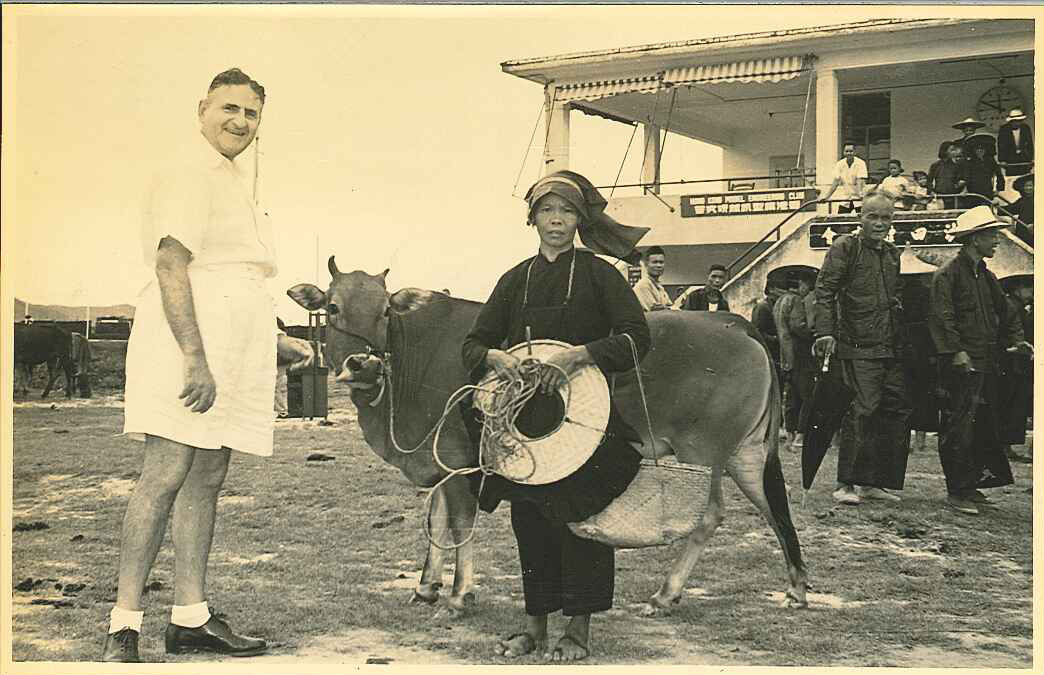
Lau Fuk Kiu’s mother Tang Mei Kiu received the biggest cow in the herd, this is the photo KAAA took for her with Horace standing next to the cow. (Date: 1958 / Location: Tai Wai. This photo is selected from the KAAA archive and Lau Fuk Kiu identified the Hakka lady in the photo as her mother Tang Mei Kiu)
Because I was the one who looked after the cattle, I was the closest to that cow (it was a female). Although she was huge (I thought she was built like a horse) she was a very docile and well-behaved cow. She helped us a lot, really thank you. Some cows will steal crops from the fields, but the first time that she learned from the others how to steal food, I said to her: “You mustn’t do this!” and after that she was very obedient and never did it again; she was really well-behaved.
About 10 years later, because it really was inconvenient to be living up in the mountains, we moved down the hill. By then because that cow had gotten old and couldn’t walk easily, we had no choice but to leave her in the mountains. I was very close to her, and every day I would go back up the mountain to look after her. I looked after her until the day she died, and when she left this world, she looked at me and cried... I cried too.
I have many lovely memories of that cow, and she also really helped us, so I want to say thank you to you again now. Of course, those who I most need to thank are the two Kadoorie brothers. (Over all these many years I’ve really wanted to say thank you, and now with this event, I can finally get my wish, I’m truly happy).
“Happy 60th birthday Kadoorie Farm ^_^!”
Lau Fuk Kiu
24 May, 2016
(My daughter helped me write this letter)
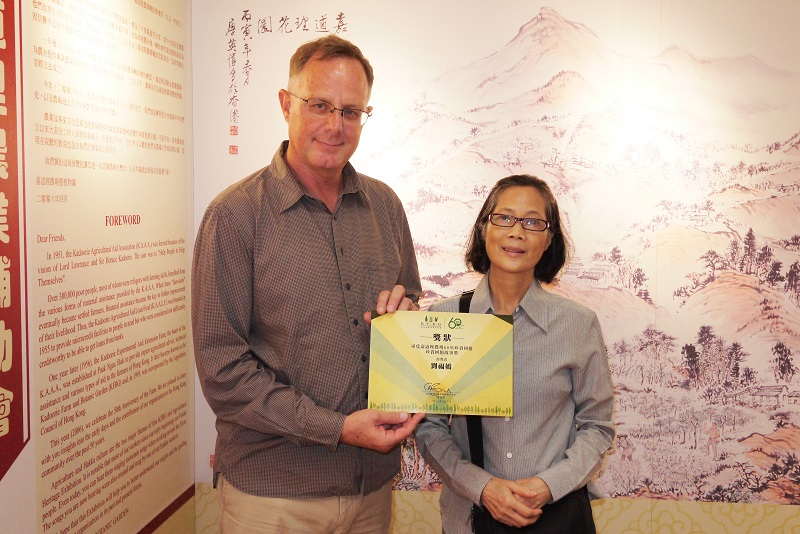
Lau Fuk Kiu was invited to visit KFBG on 12 August 2016 to receive a certiticate of appreciation. We talked with her and thanked her for telling us a touching story of herself and the free cow donated by KAAA.
Remarks: We received Lau Fuk Kiu’s hand-written letter on 26 May 2016. We wanted to contact Lau Fuk Kiu but there was no contact information written on the letter. Thanks to the media coverage, we finally found Lau Fuk Kiu and got the chance to meet her in person in August 2016.
